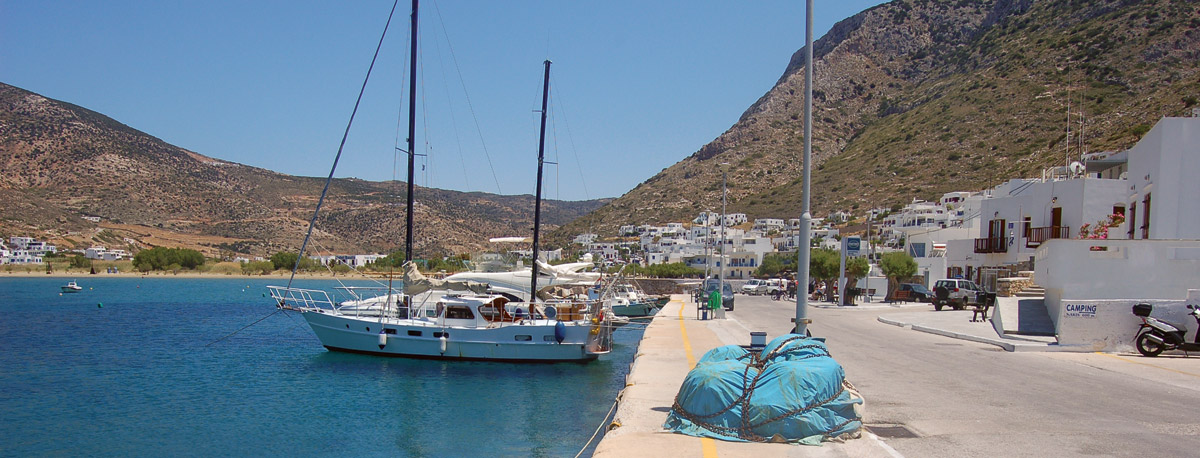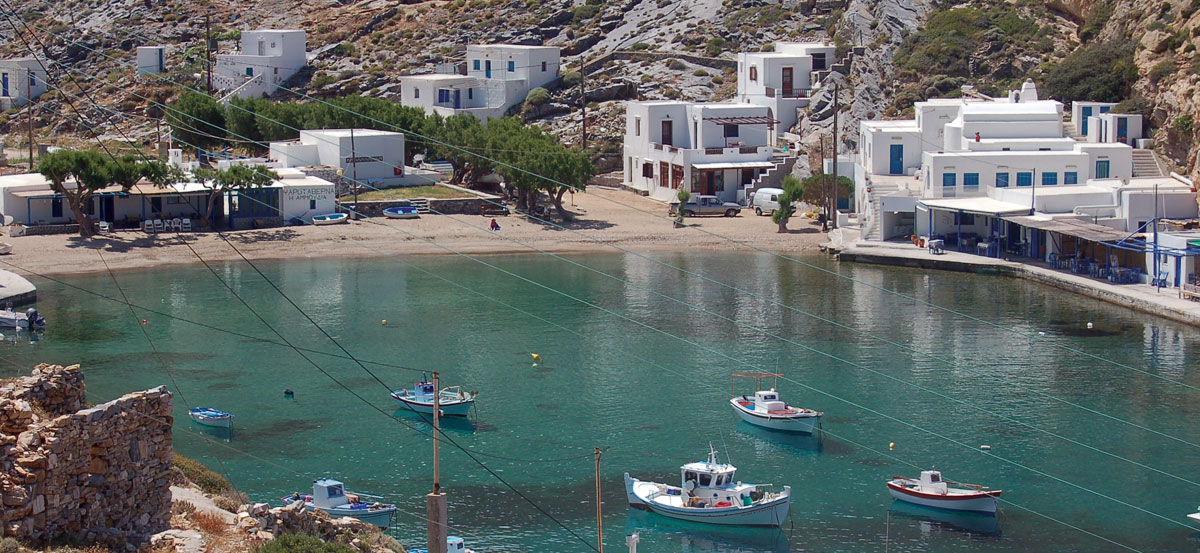
The island Sifnos took its name from the son of the Attican hero Sounio and the first inhabitant of the island. According to another version, the word Sifnos comes from the ancient greek word «sifnos», which mean empty / hollow (most likely due to its mines and quarries). The Latin Pliny said that a long time ago the island was called «Meropa» which has no specific meaning.
From the tombs and foundations discovered, the conclusion is that the first inhabitation of the island took place around the 3rd millennium BC from the Pelasgians. Then came the Carians, the Leleges and then the Phoenicians, until the Greek tribes settled on the island, in the middle of the 2nd millennium.
According to the ancient historian Herodotus, the Sifnians were the richest among the islanders, thanks to its gold and bronze mines and the development of ceramic art. Their exploitation dates from the middle of the 3rd millennium BC and the island’s silver mine was the second oldest in the world.
Indicative of the wealth of the island is the fact that the Sifnians were the first to mint gold coins and the first to engrave both sides of the coins. Also indicative is the fact that Sifnos had one of the most beautiful “Treasures” in Delphi (The Treasures were buildings with rich tributes from the cities of Greece. The famous “Treasure of Sifnos” was an Ionic style building with rich sculptural decoration, special aesthetic and artistic value – the first all-marble building of Mainland Greece)
During the Persian wars, Sifnos took part in the naval battle of Salamis and later became a member of the First and Second Athenian Alliance. The name of the island was engraved, after the wars, together with the other names of the cities that took part and distinguished themselves in the wars, in the “Tripod of Delphi”.
After the Crusade of 1204, Sifnos went through various regimes and rulers. He joined the Duchy of Naxos founded in 1207 by Markos Sanoudos. In 1269 it was occupied again by the Byzantines, while in 1307 it came to Giannouli Dakoronia. In 1464 Sifnos passed to the Gozandini family until 1537, when it was conquered by the Pirate Barbarossa. After a few years the Venetians took it back but at the beginning of the 17th century it was occupied again by the Turks.
Since then, the island enjoyed certain priviliges from the Turks and started to develop rapidly. In the middle of the 17th century, it had a fleet of 50 commercial ships. The visitor S. Rughieri will report to the Vatican that the Sifnians are hard working and excellent seamen. There is a heavy commercial traffic, the islanders produce fine fabrics, their houses are spotlessly clean and, in general, are the finest among the islanders.

Sifnos is a very beautiful island, with beaches, paths, monasteries, historical sites, museums, churches and so on. It is well known for the architecture of its houses (simple Cycladic) but also for the pottery, an old tradition on the island, the products of which can be found in many shops (the old people of our time used to say that “Sifnios” is synonymous with ” jug”).


